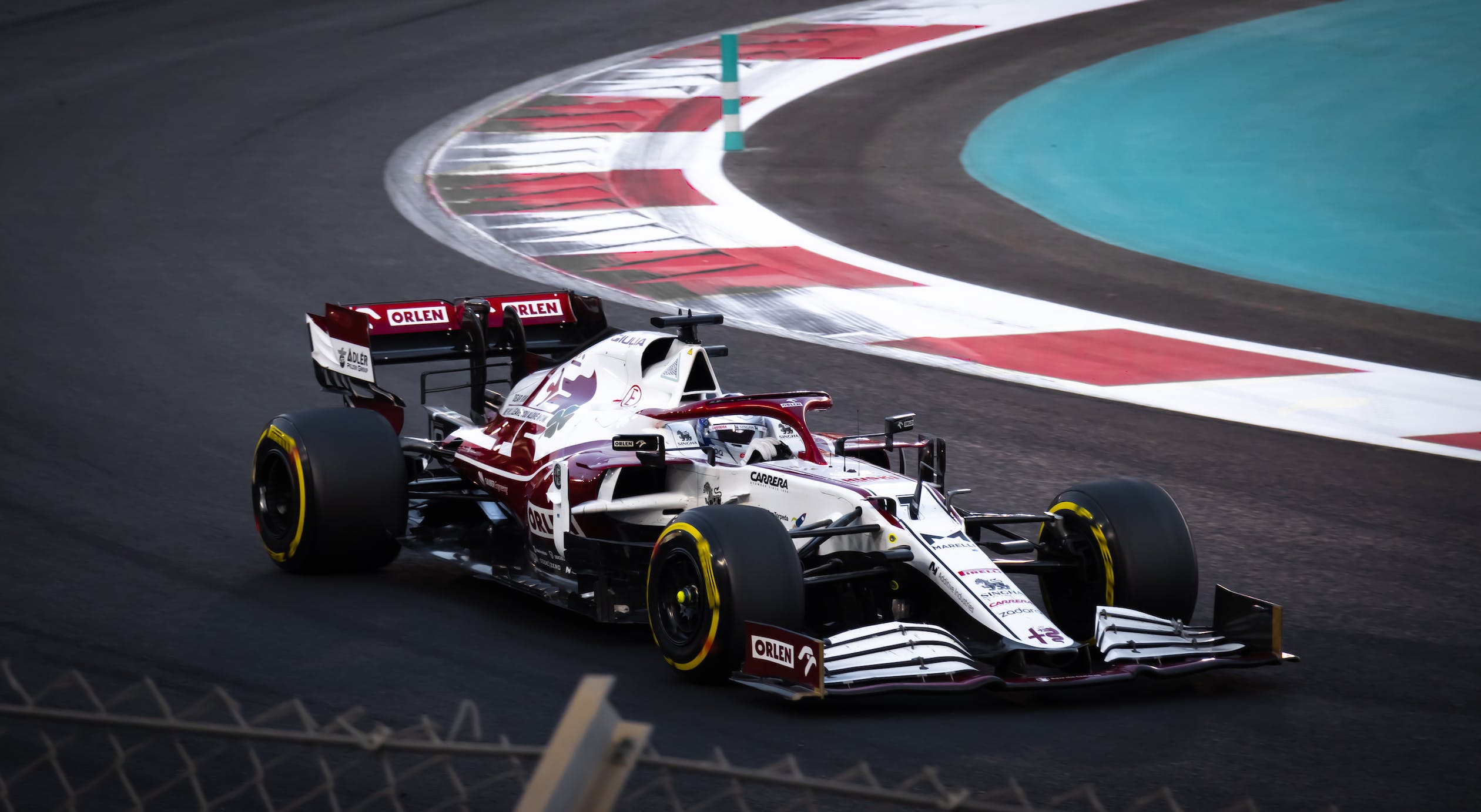
Formula 1 is a sport that’s regularly changing, largely due to frequent upgrades within the technology available to the cars.
Perhaps surprisingly, Formula 1 cars are designed to fall apart upon impact. You’ll notice that in the event of an F1 crash, the car will often completely collapse, but the driver is, more often than not, unscathed. This is because when there is a crash that results in injury, the reasons for it will be taken into consideration when the next F1 cars are built.
F1 Car Safety Features
F1 car design has safety at its forefront. With a sport as dangerous as this one, every possible safety precaution must be taken. Because of this, F1 cars are constantly undergoing redesigns as new technology is made available, introducing features like the following.
Safety Cell
Perhaps the most integral part of an F1 car’s safety is known as the safety cell – this is the portion of the car that the driver sits inside. It’s made from twelve layers of carbon fibre and features a roll hoop, which forms the entrance to the vehicle. The roll hoop is designed to stay rigid even in the event of a crash, meaning that the car should keep its shape, thereby drastically decreasing the chances of the driver getting crushed.
Halo
Just as important as this is the halo, which was introduced to F1 cars in 2018 and has been a mandatory feature ever since. The halo is a titanium structure placed in front of and over the head of the driver. It can withstand up to 12 tonnes of pressure, protecting the driver’s head from impact. Since it was brought in, the halo has saved multiple lives in F1 races.
Headrest and HANS
In an F1 car, the headrest and HANS (head and neck support) system are very sturdy. The headrest is made of shock-absorbing material, and in a HANS system, the driver’s helmet and neck brace are attached to the headrest to minimise movement of the head and neck. This protects the driver from major head and neck injuries, as well as giving them more control over the vehicle as their head is kept still.
Crash Protection Structures
Although it may sound counter-productive, crash protection structures are parts of the F1 car that are designed to crumple on impact. This is because they absorb the main impact of the crash, then break away from the rest of the vehicle to protect the driver by diverting the force away from the driver.
Fire Suppression
Modern F1 safety requires that cars are now also fitted with fire suppression systems, which minimise the spread of fire within the vehicle in the case of a crash. It can either be activated by the driver within the car, or remotely by the pit crew.
Common F1 Injuries
Thankfully, serious F1 injuries are rare due to the above safety implementations. However, that isn’t to say that there aren’t any injuries at all. In fact, there are still several common, minor injuries that most F1 drivers will experience after a race.
- Neck and back strain: This is a result of the high G-Force that F1 drivers are exposed to when turning corners and braking.
- Bruising: Due to being jostled around inside the car, a large number of F1 drivers report bruising after a race.
- Hand and wrist injuries: A tight grip on the steering wheel can result in strains, or injuries from overuse.
- Ankle and foot injuries: Similarly to hand and wrist injuries, the repetitive motions of using the pedals can lead to strains or tendonitis.
Drive Safe with Howells
As a standard driver on public roads, you won’t be at risk of the same dangers as F1 drivers, so your car won’t have the same extreme safety measures. Wherever and whatever you’re driving, it’s important to pay attention to the road and take caution behind the wheel.
If you are involved in a collision or find yourself injured, you can count on Howells’ specialist personal injury solicitors to help you with your case.

